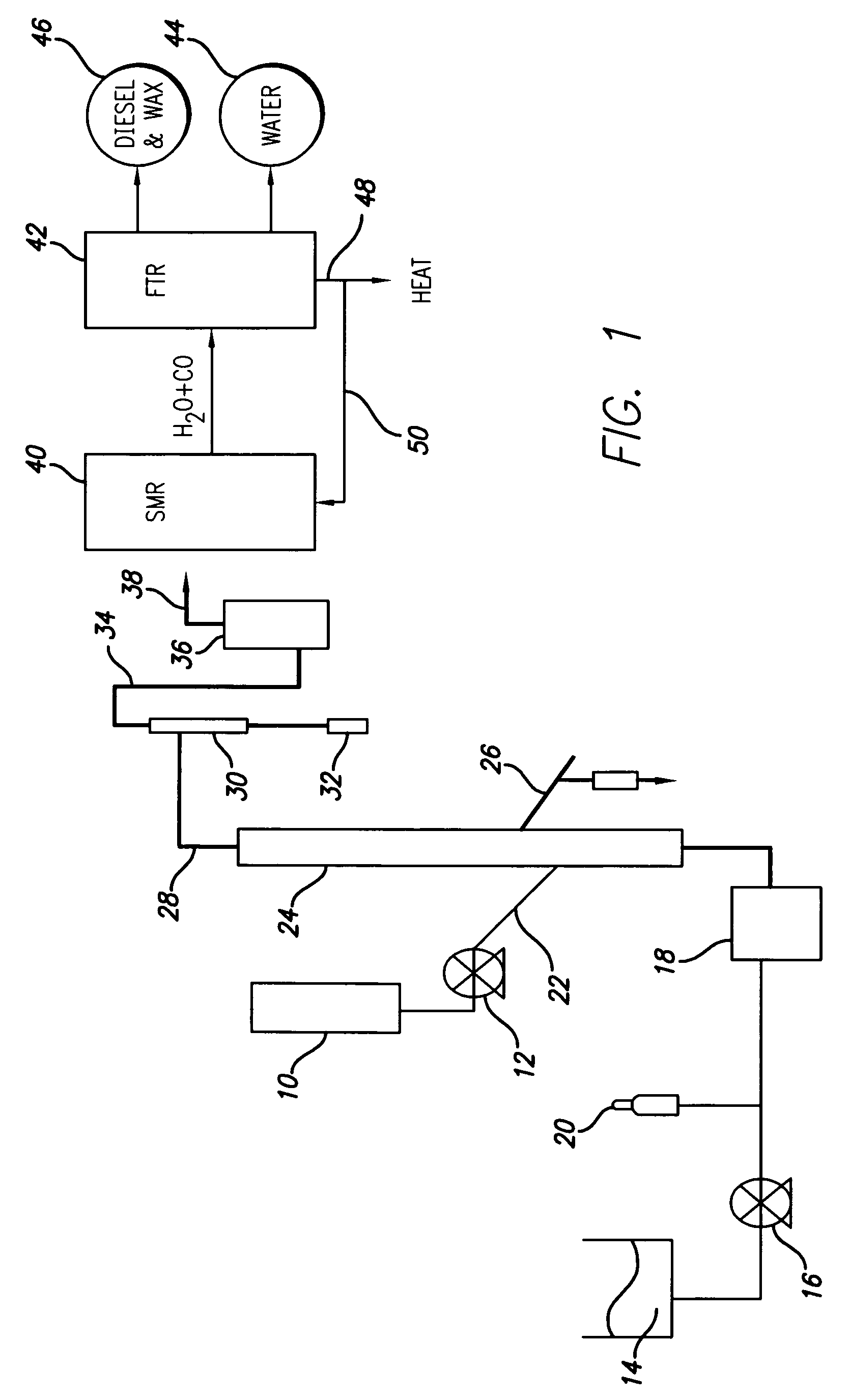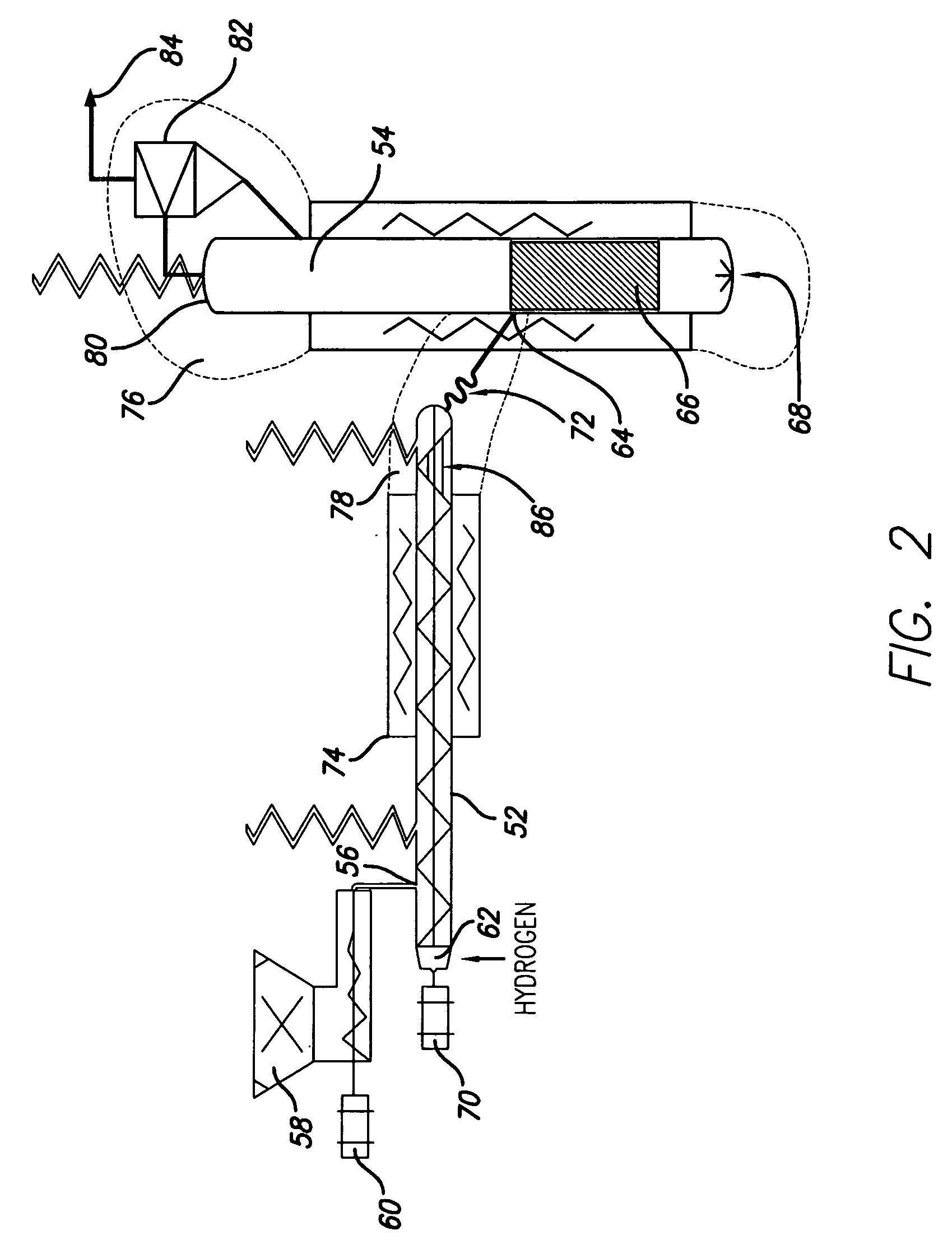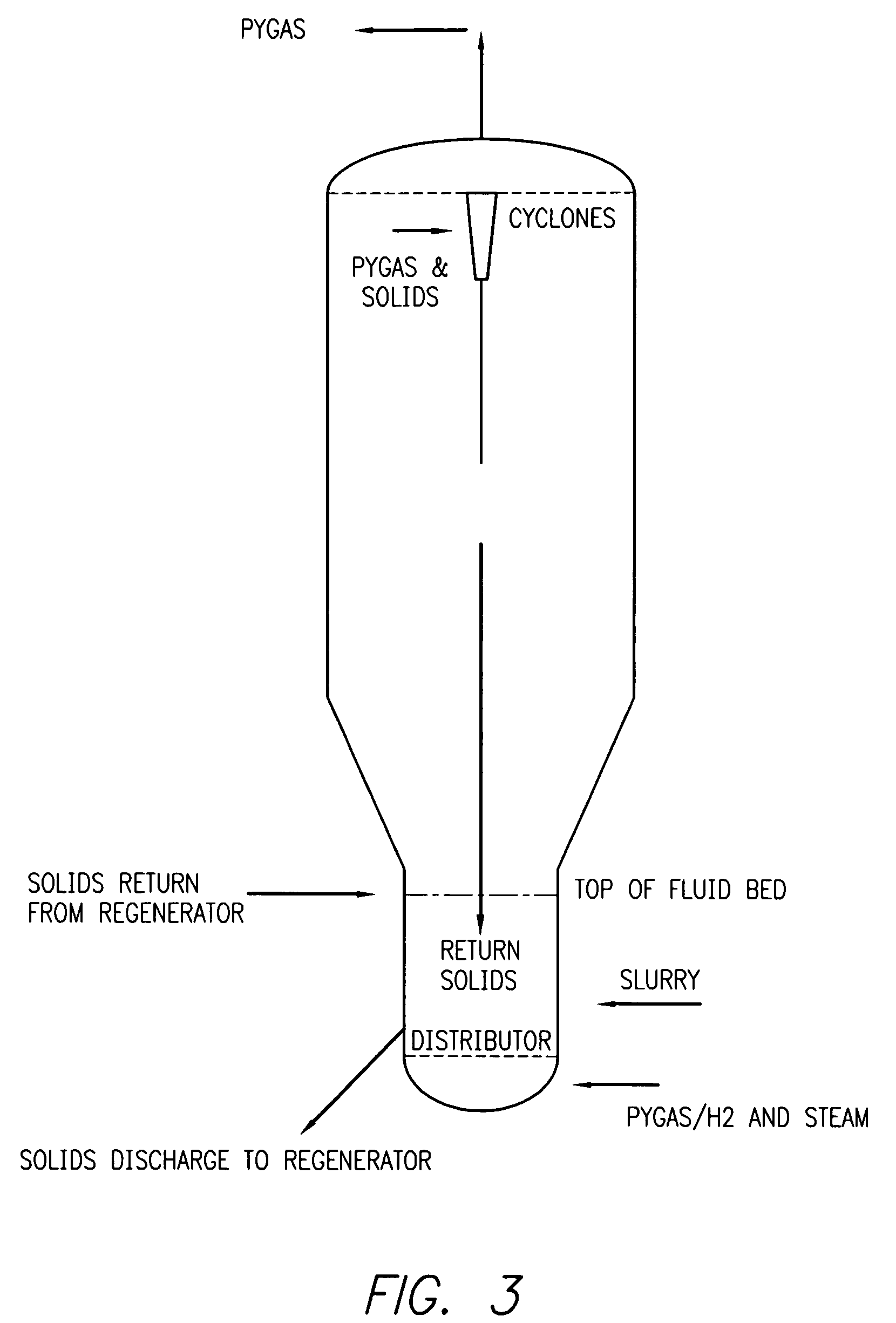Method and apparatus for steam hydro-gasification with increased conversion times
a technology of steam hydro-gasification and conversion times, which is applied in the direction of combustible gas production, combustible gas purification/modification, furnaces, etc., can solve the problems of reducing the catalyst efficiency, serious environmental pollution, and a major dependence on petroleum, so as to improve the conversion efficiency and increase the conversion time. , the effect of increasing the conversion tim
- Summary
- Abstract
- Description
- Claims
- Application Information
AI Technical Summary
Benefits of technology
Problems solved by technology
Method used
Image
Examples
Embodiment Construction
[0032]Carbonaceous material is defined herein to mean any solid and / or liquid and / or gas material containing carbon, preferably solid.
[0033]Carbon rich gas is defined herein to mean any gaseous species containing carbon.
[0034]Conversion time is defined herein as the time the carbonaceous material remains inside the reaction zone of the reactor.
[0035]Kiln type reactors, as conventionally used, can be used to perform hydrogasification. The temperatures used in such processes are 700-900° C.; the pressures used are 132-560 psi; increased carbon rich gas conversion times of between 5-45 seconds can be achieved in kiln type hydrogasification reactors by increasing the reaction zone volume.
[0036]Referring to FIG. 1, Apparatus is shown in accordance with an embodiment of the invention for a process for converting carbonaceous material such as municipal waste, biomass, wood, coal, or a natural or synthetic polymer to a methane and carbon monoxide rich gas. A slurry feed containing the carbo...
PUM
| Property | Measurement | Unit |
|---|---|---|
| temperature | aaaaa | aaaaa |
| residence time | aaaaa | aaaaa |
| pressure | aaaaa | aaaaa |
Abstract
Description
Claims
Application Information
 Login to View More
Login to View More - R&D
- Intellectual Property
- Life Sciences
- Materials
- Tech Scout
- Unparalleled Data Quality
- Higher Quality Content
- 60% Fewer Hallucinations
Browse by: Latest US Patents, China's latest patents, Technical Efficacy Thesaurus, Application Domain, Technology Topic, Popular Technical Reports.
© 2025 PatSnap. All rights reserved.Legal|Privacy policy|Modern Slavery Act Transparency Statement|Sitemap|About US| Contact US: help@patsnap.com



